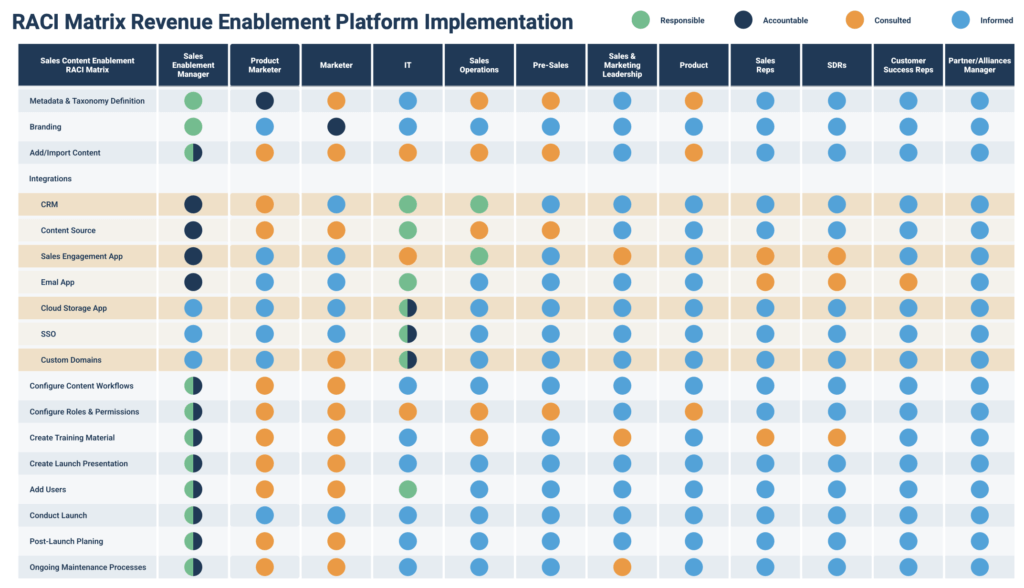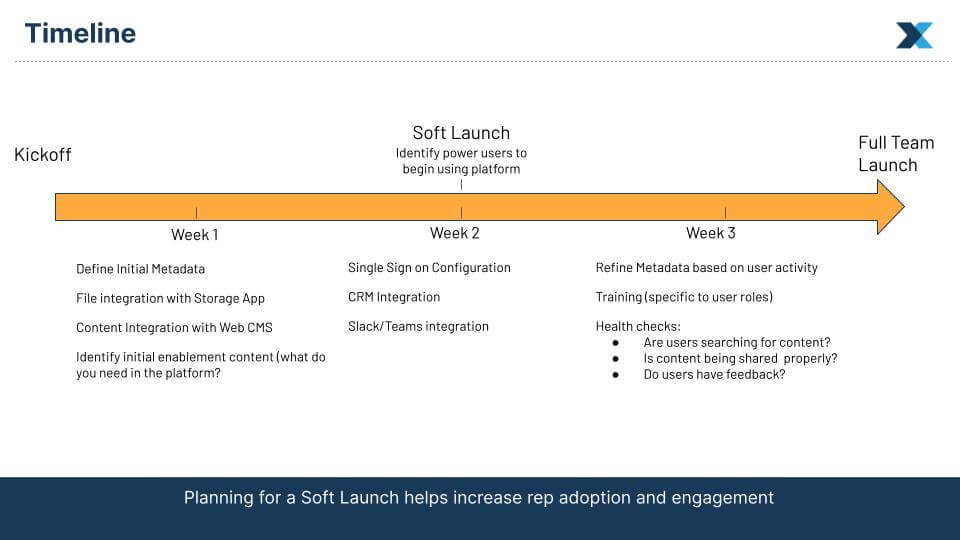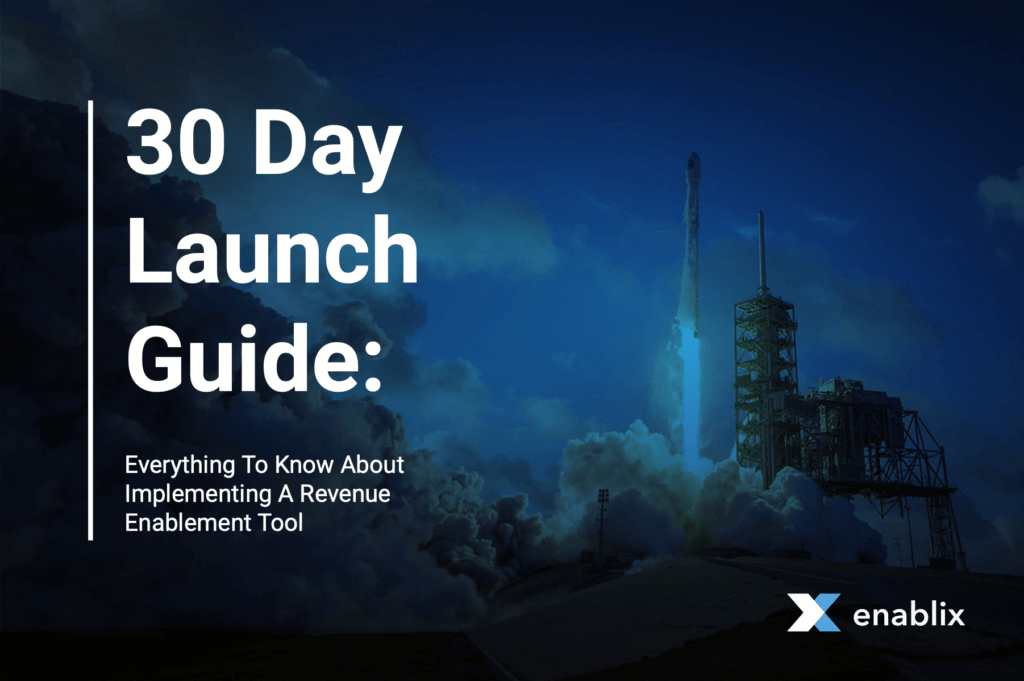Nearly every Sales Enablement and Product Marketing team would benefit from having a revenue enablement platform.
Here’s the problem: If you don’t have a solid plan for implementing the tool, buying a revenue enablement platform is going to end up costing a ton of time and effort and, ultimately, no one is going to use it. Seriously – just look at Google, everybody is wondering how to get more people to use their internal revenue enablement tool.
And while we put together a helpful guide to help you through a successful implementation, we thought a quick round of fact or fiction could get us acquainted with what we’ll be diving deep on. Ready? Good.
Want to skip the introduction and get down to implementing?
FACT OR FICTION: For a Successful Implementation, You Need to Get Input From All Your Revenue Facing Teams Prior to Launch
Verdict: FACT
We know what you’re thinking:
“No f#*king way are we getting every revenue-facing team to sit down and agree on a roll out, let alone a platform”
And, to be honest, you’re right.
Trying to get everyone’s buy-in at the same time, while tempting, is going to be impossible for many scaling organizations and is only going to present more challenges than benefit. However, charging ahead with a platform without getting buy-in from the teams that will be impacted is going to ensure you end up in the Land of Poor Sales Enablement Adoption.
The best way to get your team to use your tool is is to ask for feedback and keep them in the loop. This sounds daunting, but it’s easy:
- Get initial buy-in and do high-level requirements gathering from teams prior to launch
- Involve your team in the soft launch and be sure to publicize any benefits
- Follow our RACI matrix to ensure each stakeholder is properly responsible, accountable, or informed:

FACT OR FICTION: It's crucial to get the setup right, so be sure to get everything perfect prior to onboarding users
Verdict: fICTION
For something that we wrote a whitepaper on, it might be surprising that nailing the initial launch isn’t that important. But that’s only because your initial launch should not be to the entire team.
This leads us to maybe the most helpful tool to nailing your implementation: The Soft Launch.
A soft launch is giving a few users access to the platform 2 to 3 weeks before the actual launch which allows for them to start playing with the tool and provide feedback. This step is helpful in determining potential bugs and problems, and gives extra time to work them out before the full launch. Think of it like this:

FACT OR FICTION: If Your Current Enablement Solution Has Low User Adoption, You Need to Switch Platforms
Verdict: fICTION
“It’s not you, it’s me”
We’ve all heard it before, but this time it’s true – your tool is not the problem, it’s the way you’ve implemented it. So, while getting a new tool may feel good, it’s going to give you the same result unless you change your process.
If you aren’t getting adoption from your current sales enablement platform, consider using this guide to help you transform from sales enablement to revenue enablement.
Want more adoption? Check out our blog post on
Unlike a typical sales enablement approach which might just require the buy-in from the sales and marketing teams, a revenue enablement strategy is going to require some amount of participation between every revenue-facing team. That’s because a typical sales enablement implementation is limited in the value it can deliver to your organization, while a revenue enablement approach accelerates revenue through every stage of the prospect, partner, and customer lifecycle.
The steps and processes we cover in this guide can help you reboot your platform and make it a useful tool for your teams, even if it isn’t new.
FACT OR FICTION: A successful launch means you don’t have to think about user adoption post-launch
Verdict: fICTION
Ok, so you could probably see this one coming. Regardless of how well you launch, you will still need to make time for occasional upkeep. Updating trainings and taking care of quality issues for certain assets will keep your platform running smoothly and make sure that your teams continue using it.
But here’s the thing: your platform should make this really, really easy. Ideally, your platform of choice has detailed integrations, plugins, and workflows to make finding adoption issues and fixing any issues simple. Now, we obviously have opinions when it comes to finding a good revenue enablement platform, but we’d like to think we have a pretty good understanding of the industry as a whole and can help guide you to the right solution for you. Don’t believe us? Get in touch to find out.
Download the full guide now




